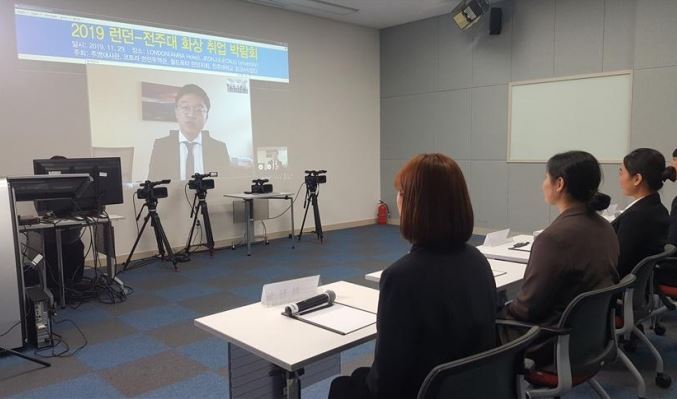[News Focus] Payouts for jobless soared 81% since 2017
By Kim Yon-sePublished : Dec. 26, 2019 - 14:42
SEJONG -- Data provided by a state-funded agency showed that the volume of unemployment benefits paid to the jobless has sharply increased over the past two years.
The figures, from the Korea Employment Information Service, suggest that the economic slowdown is forcing more and more people to leave their workplaces or close their businesses.
South Korea saw monthly payouts of unemployment benefits reach 704.4 billion won ($605.1 million) in October 2019, compared with 388.8 billion won in October 2017, according to the KEIS, representing an 81.1 percent jump in only two years. While the Ministry of Employment and Labor has released the latest data for November 2019, its figures are provisional.
The increase in the statutory minimum wage affected these figures, because benefits are paid in proportion to a worker’s salary. But even so, the steep rise in benefits paid far outpaced inflation.
The figures, from the Korea Employment Information Service, suggest that the economic slowdown is forcing more and more people to leave their workplaces or close their businesses.
South Korea saw monthly payouts of unemployment benefits reach 704.4 billion won ($605.1 million) in October 2019, compared with 388.8 billion won in October 2017, according to the KEIS, representing an 81.1 percent jump in only two years. While the Ministry of Employment and Labor has released the latest data for November 2019, its figures are provisional.
The increase in the statutory minimum wage affected these figures, because benefits are paid in proportion to a worker’s salary. But even so, the steep rise in benefits paid far outpaced inflation.

And the number of recipients increased by 110,639, or 34 percent, from 325,105 to 435,744 during the same two-year period.
Among Korea’s 17 regions nationwide, comprising provinces and major cities, Gyeonggi Province had the greatest number of people on benefits, 115,162, as of October 2019. Seoul was next with 83,398, followed by Busan with 34,651, South Gyeongsang Province with 29,326, Incheon with 27,815, Daegu with 21,046 and North Gyeongsang Province with 20,996. There were only 2,161 recipients in Sejong, which has the smallest population.
The KEIS data showed that the number of recipients surged over the past 12 months, in particular among Korean business owners engaged in service industries such as food, lodging and tourism.
A year earlier, in October 2018, only 144 food retailers received unemployment allowances. But the number of recipients climbed rapidly in 2019, recording 1,574 in February, 2,884 in April, 4,099 in June, 6,032 in August and 7,656 in October.
The figure for the lodging and tourism industries shot up to 1,532 people in October 2019, from only 30 a year before.
“The KEIS clarifies that there could be differences in figures between net recipients and redundancy-included recipients in statistics,” said an analyst. “Nevertheless, it is clear that the small-restaurant and lodging-tourism sectors represented a sharp contrast to other job groups.”

The recent surge in the number of people on benefits in the three retail sectors is ascribable to the closure en masse of operations among the self-employed and microbusiness owners, the analyst said.
A large percentage of self-employed individuals were engaged in the three sectors, which have been hit both by a sagging economy and a tougher labor cost burden in the wake of drastic hikes in the minimum wage in 2018 and 2019.
The statutory minimum wage increased from 1.35 million won per month in 2017 to 1.74 million won in 2019.
The average recipient of unemployment benefits collected 1.18 million won a month in 2017. But that figure surged to 1.51 million won in 2019.
On a yearly cumulative basis, payouts for the jobless reached a record high of 6.4 trillion won for 1.33 million recipients in 2018, as compared with 5 trillion won in 2017 and 4.6 trillion won in 2016.
Since 2008, when the nation paid out 2.4 trillion won in unemployment benefits, cumulative payments have soared more than 160 percent. If the trend continues at its current pace, the yearly figure for 2019 could exceed 8 trillion won.
People in their 50s accounted for the largest proportion of those on unemployment benefits in October 2019 at 26.5 percent, whereas those in their 60s comprised 21.2 percent. Next were those in their 40s with 19.7 percent, those in their 30s with 19.4 percent and those in their 20s at 12.3 percent.
Women slightly outnumbered men among benefit claimants that month, accounting for 50.2 percent of the total.
By Kim Yon-se (kys@heraldcorp.com)









![[Kim Seong-kon] Democracy and the future of South Korea](http://res.heraldm.com/phpwas/restmb_idxmake.php?idx=644&simg=/content/image/2024/04/16/20240416050802_0.jpg&u=)







![[KH Explains] Hyundai's full hybrid edge to pay off amid slow transition to pure EVs](http://res.heraldm.com/phpwas/restmb_idxmake.php?idx=652&simg=/content/image/2024/04/18/20240418050645_0.jpg&u=20240418181020)

![[Today’s K-pop] Zico drops snippet of collaboration with Jennie](http://res.heraldm.com/phpwas/restmb_idxmake.php?idx=642&simg=/content/image/2024/04/18/20240418050702_0.jpg&u=)